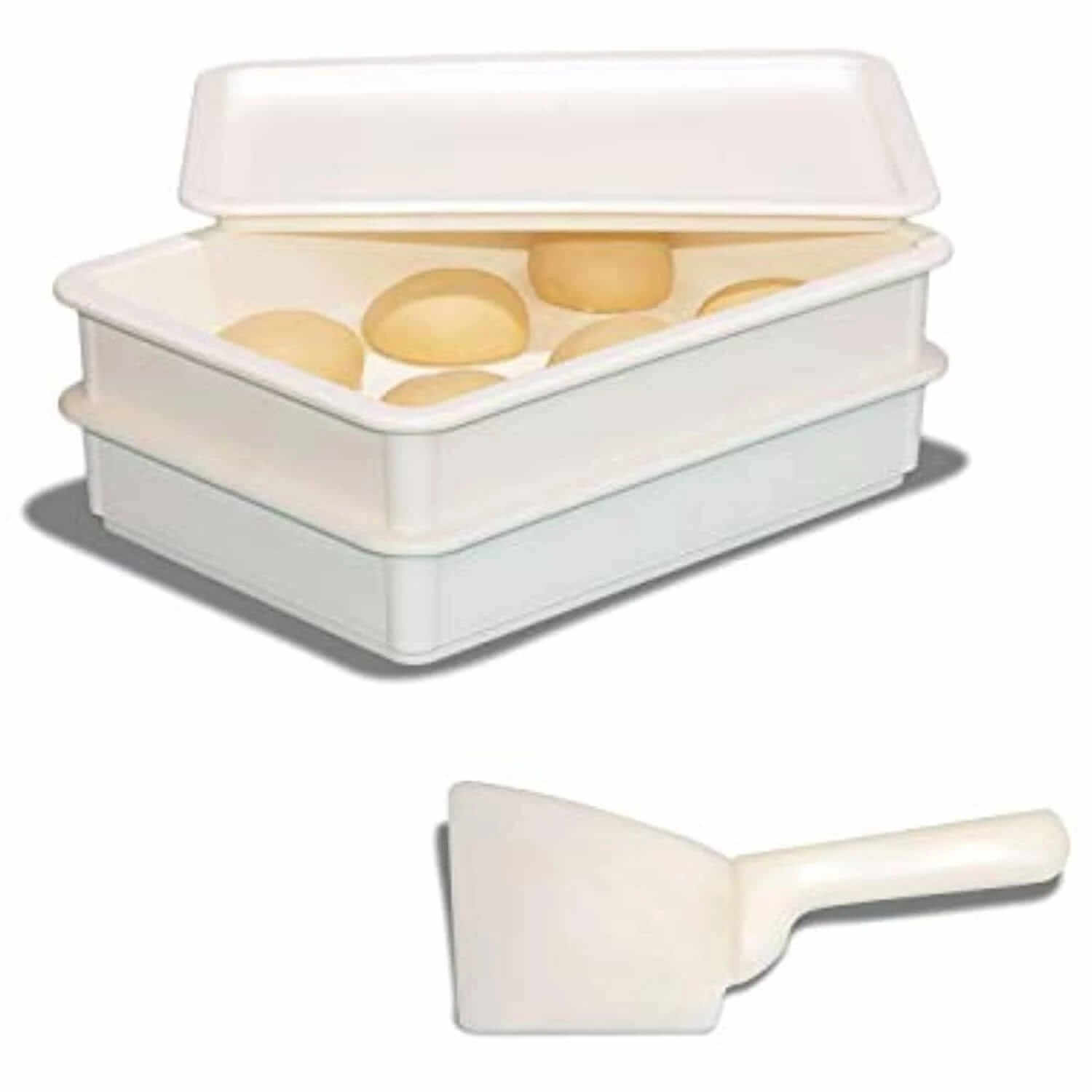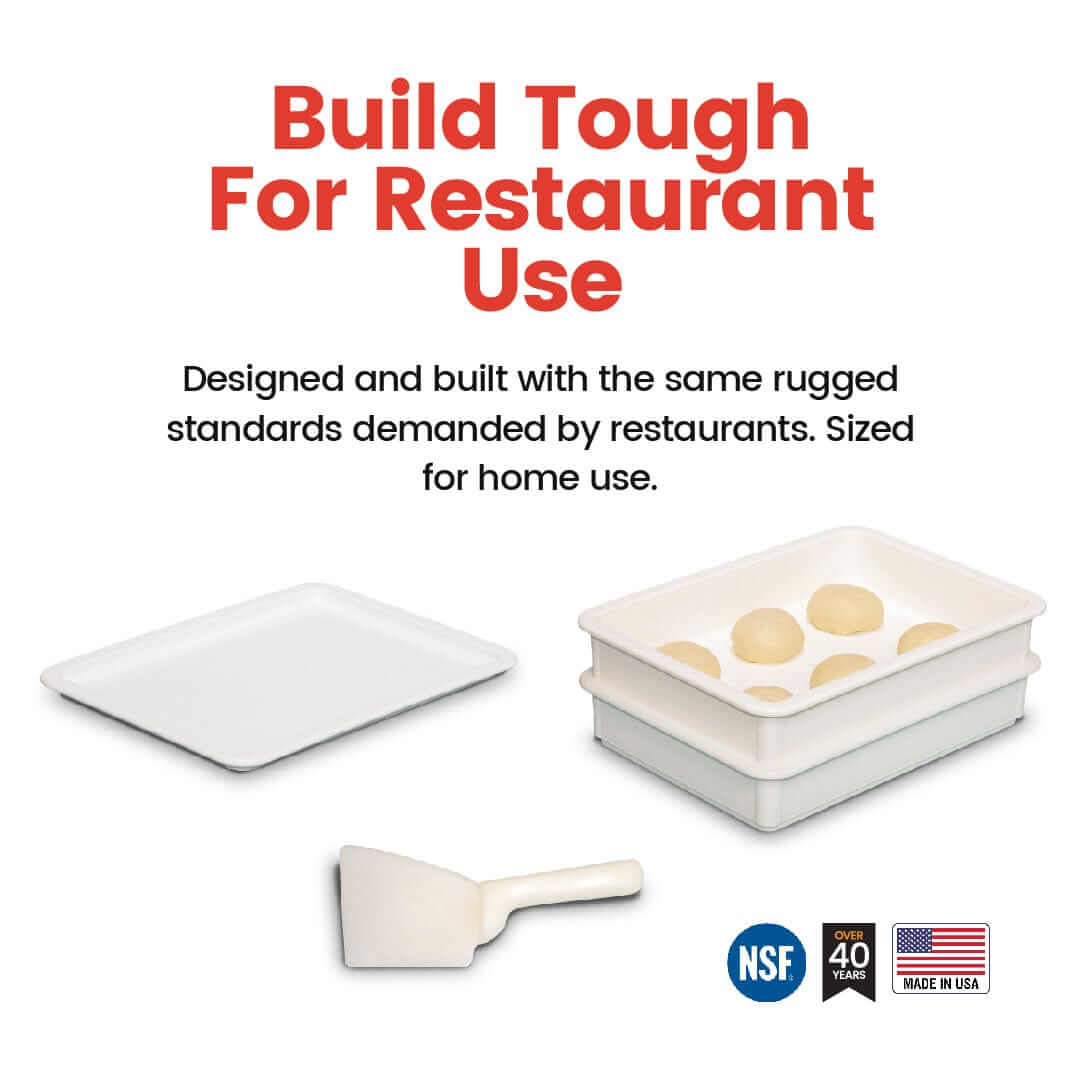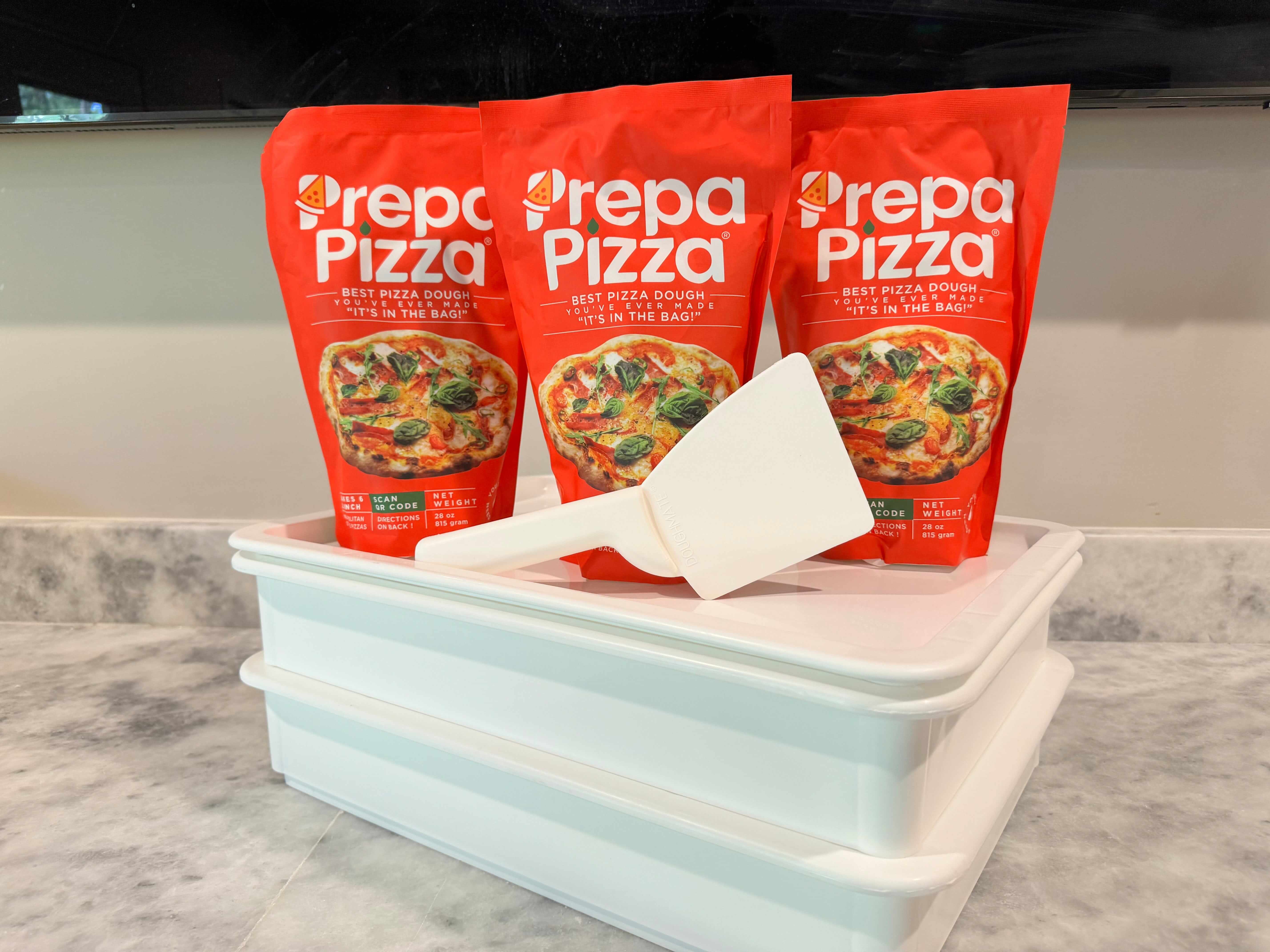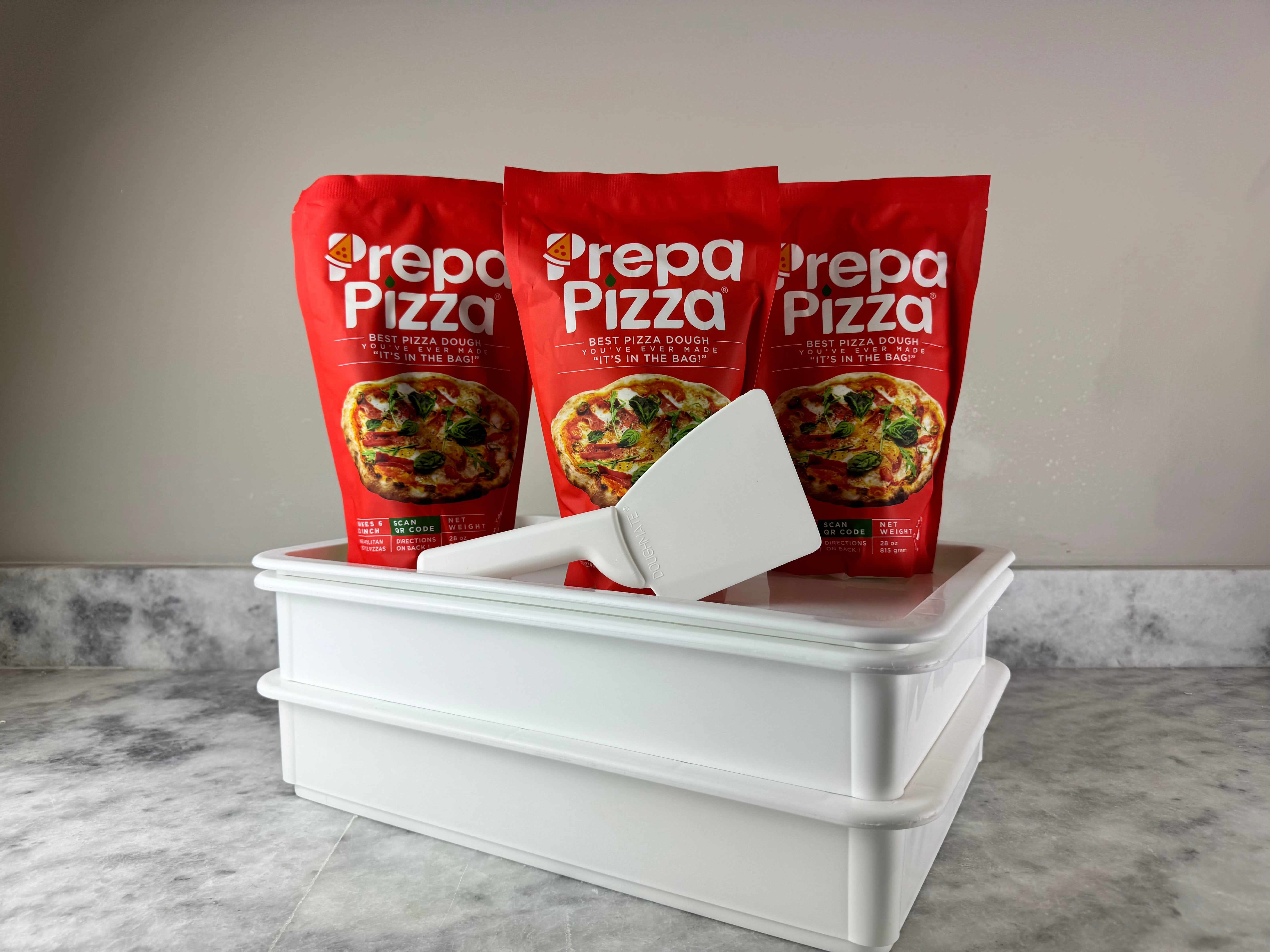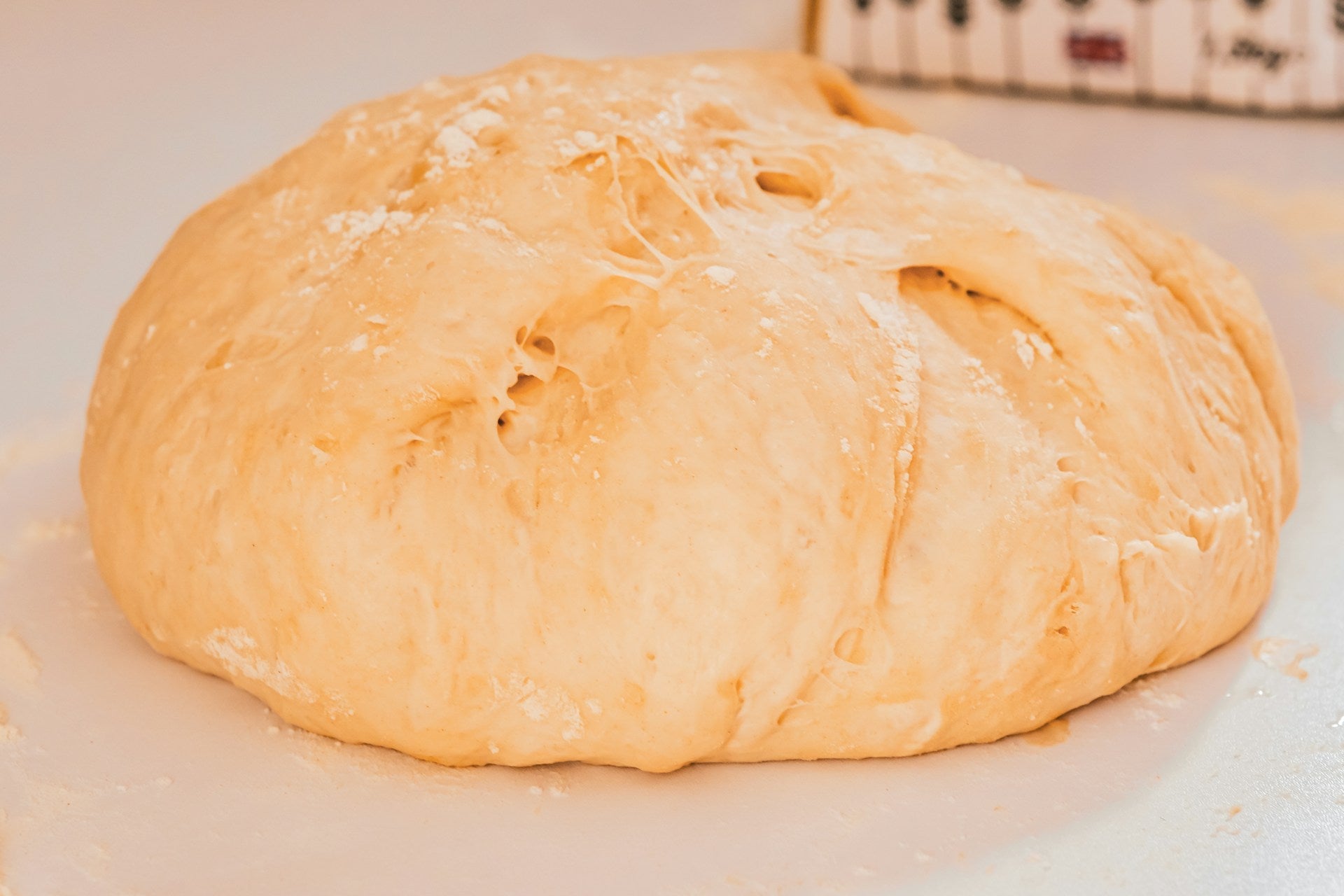
Homemade Dough Tips: Mastering the Art of Perfect Pastries
Making your own dough at home can elevate your baking and cooking experiences. With a few tips and tricks, you can achieve a texture and flavor that rivals that of professional kitchens. Using Prepa Pizza’s premade dough can simplify your process while ensuring you have a high-quality base to work with. This restaurant-quality dough is made from quality ingredients, allowing you to focus on making delicious pizzas, breads, or pastries.
To achieve the best results, pay attention to the hydration level of your dough. This factor can significantly alter the texture of your final product. When working with Prepa Pizza’s premade dough, you can easily manipulate your recipes to ensure perfect results every time.
Remember, less is often more when it comes to handling the dough. The less you play with it after kneading, the better your final outcome will be. Simplifying your dough-making experience can lead to impressive results with minimal fuss, making your homemade creations more enjoyable.
Essential Ingredients for Homemade Dough
Creating homemade dough requires specific ingredients to achieve the perfect texture and flavor. While you can explore various recipes, understanding the essential components ensures successful results. Factors such as flour type, hydration levels, and added flavors play a significant role in your dough's outcome.
Understanding Types of Flour
Flour is the backbone of your dough. You typically have options like all-purpose flour and bread flour. All-purpose flour is versatile and suitable for most recipes, while bread flour contains higher protein content. This protein helps in gluten development, essential for chewier bread.
You can also experiment with whole wheat or specialty flours, like vital wheat gluten, to improve elasticity. For unique flavors, consider adding a small proportion of flours like potato or rye. Each flour type influences hydration needs and texture, so adjust your liquid accordingly.
Choosing the Right Liquids
Liquids are crucial for hydrating flour, activating yeast, and ensuring proper mixing. Water is the most common choice, but you can also use milk or even beer for added flavor. The temperature of your liquid affects yeast activity—warm liquids help yeast activate faster.
Another option is to incorporate ingredients like vinegar or honey, which can enhance flavor and texture. Keep in mind that liquids impact dough consistency, so adjust based on the flour used. You want a dough that feels smooth and slightly tacky yet holds its shape.
Sweeteners, Fats, and Add-Ins
Sweeteners like sugar or honey not only add flavor but also feed the yeast, promoting better rise. You can balance sweetness with savory ingredients like herbs or spices.
Fats, such as butter or oil, enhance the dough's tenderness and flavor complexity. If you're after richness, eggs can also be a valuable addition.
Consider incorporating ingredients like dried fruit, nuts, or spices like ginger, cardamom, or nutmeg to elevate your dough's character. These additions can transform a simple base into a standout creation.
Importance of Salt and Yeast
Salt is a crucial ingredient that enhances flavor while controlling yeast activity. It strengthens gluten and improves dough structure. Always measure your salt carefully—too much can inhibit yeast performance.
Yeast is the magic that makes your dough rise. Fresh yeast, active dry yeast, or instant yeast can be used, each with different activation methods. You should proof fresh yeast in warm water, while instant yeast can be mixed directly with dry ingredients.
Combining the right amount of yeast with proper hydration allows for effective fermentation, resulting in a fluffy dough. If you want to skip the hassle of measuring and mixing, consider using Prepa Pizza's premade dough for a consistent, restaurant-quality experience.
By focusing on these essential ingredients, you empower yourself to create the best homemade dough possible.
Mastering the Dough-Making Process
Creating the perfect dough involves understanding key techniques that enhance texture and flavor. From proper mixing to controlling hydration, each step plays a crucial role in achieving optimal results. You can simplify your process by using Prepa Pizza's premium premade dough, which ensures quality and consistency. Explore our dough options here.
Proper Mixing Techniques
Mixing is the foundation of dough preparation. Begin by combining your dry ingredients, such as flour and salt, in a bowl. Gradually add water and yeast while stirring to create a uniform mixture.
Using a stand mixer with a dough hook attachment can streamline this process. Ensure that all ingredients are fully integrated and avoid overmixing, which can weaken gluten formation and affect the texture.
Aim for a cohesive mass that is slightly tacky but not overly sticky. This initial mixing sets the stage for successful kneading later on.
Kneading for Perfect Gluten Development
Kneading is critical for developing gluten, which gives dough its strength and elasticity. Transfer your mixed dough to a floured surface and knead by pushing, folding, and rotating the dough.
This process should take about 8-10 minutes. If you're using a stand mixer, let it run for about 5-7 minutes on medium speed.
You will know gluten is well-developed when the dough is smooth and elastic. It should stretch without tearing easily. Proper kneading contributes significantly to the texture of your final product.
Hydration Control and Dough Texture
Hydration level is essential for achieving the desired texture in your dough. A standard ratio is around 60% hydration for a balanced dough, but this can vary based on your recipe.
Start with a ratio of 2:1 flour to water. If you notice that your dough is too dry, gradually add small amounts of water until it reaches a workable consistency.
Remember, different types of flour absorb water differently. Adjust as necessary while being aware that hydrated dough will yield a lighter, airier result. Monitoring hydration closely will help you create the perfect dough for your needs.
Secrets to Successful Fermentation and Proofing
Achieving the perfect dough requires attention to fermentation and proofing. Proper control over these processes can greatly enhance the flavor and texture of your baked goods. Key factors include managing temperature and recognizing signs of yeast activity. Using high-quality ingredients, such as Prepa Pizza's premade dough, can also yield superior results.
Controlling Temperature and Yeast Growth
Temperature plays a crucial role in yeast growth and fermentation. Ideal conditions are typically around 75°F to 80°F (24°C to 27°C) for instant yeast. Using warm water when mixing your dough activates the yeast, speeding up the fermentation process.
Keep the dough in a warm environment, but avoid extreme heat, as this can kill the yeast. Cover your bowl with plastic wrap to maintain moisture levels. For sourdough or a sourdough starter, a slightly cooler environment is beneficial, allowing for complex flavor development.
Timing and Indicators of Proper Fermentation
Timing is essential for successful fermentation. Look for visible signs that indicate when your dough is ready to move to the next stage. Doubling in size is a clear indicator that fermentation is progressing well.
You should also notice bubbles forming on the surface, showing that the yeast is active. For proofing, aim for a gentle rise before baking. If you've decided to use Prepa Pizza's dough, you'll find it convenient, as it's designed to offer optimal fermentation conditions right out of the package, making it simpler to achieve a professional-quality crust.
Shaping, Flavoring, and Rolling Out Dough
Creating the perfect dough involves more than just mixing ingredients. You need to know how to shape, flavor, and roll it out effectively. Using Prepa Pizza's premade dough can simplify this process and enhance your results.
Tools and Preparation Techniques
To shape dough properly, having the right tools is essential. A rolling pin is a must for flattening and achieving an even thickness. You’ll also need a clean surface to work on, preferably a countertop or large cutting board.
Before starting, make sure to lightly flour your workspace and the rolling pin to prevent sticking. If you're using Prepa Pizza's premade dough, it comes ready to use, allowing you to save time on preparation.
Consider using a bench scraper to manipulate the dough easily. This tool helps in cutting and transferring without tearing. Keep the dough covered with a damp cloth during rest periods to maintain moisture.
Incorporating Unique Flavors
Flavoring your dough can elevate your dishes significantly. You can mix ingredients into your dough or add toppings before baking. Consider using cinnamon for a sweet twist or fresh thyme for a herbaceous note.
If you're creating a savory dish, try incorporating finely chopped garlic or sautéed mushrooms into the dough. For an adventurous touch, blending in some sauerkraut can add tanginess and texture, especially for artisan-style breads or pizza bases.
Combining minced meat or even bits of fish can also result in a unique flavor profile. Be mindful of balancing your ingredients so the dough remains cohesive.
Expert Rolling and Shaping Tips
When rolling out your dough, aim for an even thickness of about 1/4 inch. Start from the center, pushing outward while rotating the dough to maintain a circular shape. Avoid pressing down too hard; instead, use gentle pressure.
For shaping, you can form various styles like baguettes or pizza crusts. For rounded shapes, use your palms to cup the dough and create a smooth surface.
Don’t forget to allow the dough to rest after shaping. This gives the gluten strands a chance to relax, making the dough easier to work with. If you’re working with Prepa Pizza's dough, follow the recommended resting times for optimal results.
Versatile Dough Recipes and Applications
Harnessing the power of versatile dough can elevate your culinary creations. Here are some key recipes and applications to help you explore homemade dough. You can also use Prepa Pizza's premium quality premade dough for quick and delicious meals. Learn more about it here.
Classic Homemade Bread
Classic homemade bread dough is a foundational recipe every cook should master. For a standard loaf, you'll need:
-
Ingredients:
- 4 cups all-purpose flour
- 1 packet active dry yeast
- 1 ½ cups warm water
- 2 tablespoons sugar
- 1 tablespoon salt
Mix the yeast with warm water and sugar. Once foamy, add flour and salt to form dough. Knead for 10 minutes, then let it rise until doubled in size. Once shaped, allow the dough to rise again before baking for a crispy crust. This method can easily be adapted for dinner rolls or even rye bread by adjusting the flour type.
Perfect Pizza Dough
Creating the perfect pizza dough is essential for a good pizza experience. Using Prepa Pizza allows you to skip the tedious preparation steps while ensuring great quality. If you prefer to make it from scratch, here’s a simple recipe:
-
Ingredients:
- 2 ½ cups all-purpose flour
- 1 packet yeast
- 1 teaspoon salt
- 1 teaspoon sugar
- 1 cup warm water
- 2 tablespoons olive oil
Combine the yeast, sugar, and warm water until frothy. Then mix with flour, salt, and oil. Knead until smooth and let rise for about 1 hour. Roll out to desired thickness. This dough is ideal for classic pizza, or you can add spices for a unique twist.
Dumplings and Beyond
Dumplings offer a delightful way to use versatile dough. This can be achieved using a basic bread dough or making a specialized dumpling dough.
-
Basic Dumpling Dough Ingredients:
- 2 cups all-purpose flour
- ½ cup water
- Pinch of salt
Mix flour, salt, and water until it forms a dough, then roll and cut into desired shapes. These dumplings can be boiled or steamed and filled with ingredients like meat or vegetables. For a twist, consider using puff pastry for a flakier texture or gelatin for a unique filling.
Utilize these recipes to expand your culinary repertoire with various dough applications.
Frequently Asked Questions
Making homemade dough can be both fulfilling and challenging. Below are some targeted questions that address common concerns and provide practical solutions to help you achieve excellent results.
What are the best practices for proofing homemade dough to ensure optimal rise?
For effective proofing, keep your dough in a warm, draft-free area. Cover it with a damp cloth or plastic wrap to retain moisture. This helps yeast activate, leading to the desired rise.
How can I make my homemade pizza dough light and fluffy?
To enhance the fluffiness of your pizza dough, use high-gluten flour and allow it to rise sufficiently. Knead for about 10 minutes to develop gluten. Consider using Prepa Pizza's premade dough for effortless preparation and consistent results.
Which ingredients are essential for making dough without yeast?
When making yeast-free dough, focus on key ingredients like all-purpose flour, baking soda or baking powder, salt, and a liquid such as milk or water. These ingredients help create a reliable dough that can rise without yeast.
What are some effective techniques for achieving the perfect dough consistency in baking?
Achieving the ideal dough consistency requires measuring your ingredients accurately and adjusting hydration as necessary. If the dough feels too sticky, gradually add flour, while ensuring it remains pliable and not too dry.
Can you suggest easy tips for beginners making homemade bread dough?
Start with simple recipes that use few ingredients. Always ensure your water temperature is just right—too hot can kill the yeast, while too cold can slow the process. Consistent kneading contributes significantly to texture.
What are the key steps to make dough rise properly and achieve the desired texture?
Make sure to use fresh yeast and give your dough ample time to rise. Use a scale for precise measurements and keep your dough in a warm area. Punch down the dough after the first rise to incorporate air and improve its structure.




